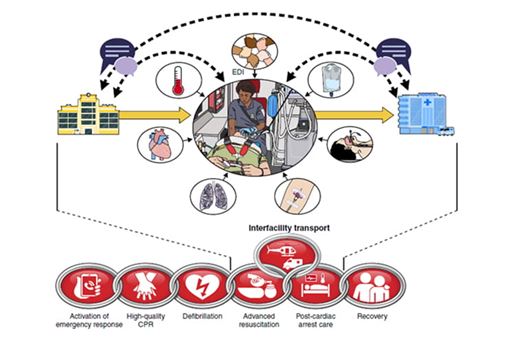Management of Patients With Cardiac Arrest Requiring Interfacility Transport
Published: September 19, 2024

- Optimal methods for building a safe and effective interfacility transport (IFT) system of care after cardiac arrest are understudied, with many knowledge gaps.
- Clear communication among the transferring center, receiving center, and IFT team is crucial to guarantee patient safety. Such communication must encompass discussions on overall clinical stability and potential issues that may arise.
- It is vital that post-resuscitation treatments started in the referring emergency department, including active temperature management and hemodynamic optimization, be maintained throughout the IFT process whenever possible.
Recommended Reading
- Cardiac Arrest and Cardiopulmonary Resuscitation Outcome Reports: 2024 Update of the Utstein Out-of-Hospital Cardiac Arrest Registry Template
- Improving Outcomes After Post–Cardiac Arrest Brain Injury
- The American Heart Association Emergency Cardiovascular Care 2030 Impact Goals and Call to Action to Improve Cardiac Arrest Outcomes
- Critical Care Management of Patients After Cardiac Arrest
- Temperature Management for Comatose Adult Survivors of Cardiac Arrest
- Organ Donation After Out-of-Hospital Cardiac Arrest
- Understanding the Importance of the Lay Responder Experience in Out-of-Hospital Cardiac Arrest
- vptimizing Outcomes After Out-of-Hospital Cardiac Arrest With Innovative Approaches to Public-Access Defibrillation
- Opioid-Associated Out-of-Hospital Cardiac Arrest: Distinctive Clinical Features and Implications for Health Care and Public Responses